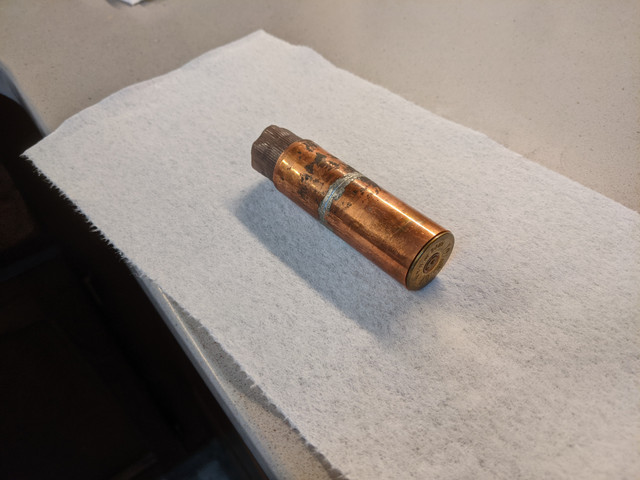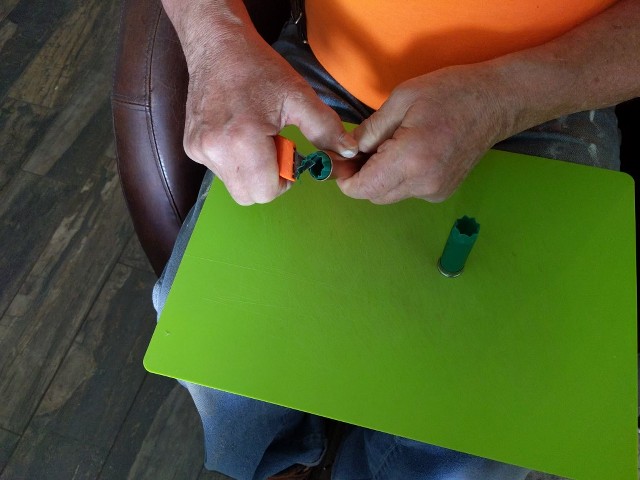Quote:
Originally Posted by Erich Bretschneider

Interesting but it is very dependent on uniform base wad height.
I make these 10ga trimmers by soldering two 3/4" copper pipe couplings then trimming to desired length. They index on the rim so all cases are the same length, never needs adjusting.

12ga one can be made from just a length of 3/4" copper pipe.

12ga in uses to show operation.
 |
I'll throw a variation out here.
Instead of couplers, you can also buy a 3/4" repair piece that is basicaly is a 6"-7" pipe with an ID equal to the OD of standard pipe. (They are used to repair a split or holed pipe by cutting out the bad spot, sliding it over one and then the other, then soldering. It uses 1 instead of three pieces, does away with the need for critical measuring, and requires only 2 solder joints. Because it slides along the pipe, it can be inserted in a straight section without pilling one section back 1/2". This is sometmes a real problem.)
Anyway, you can buy one of these and make of couple of different trimming lengths for 10 gauge with just two quick tubing cuts. It is the same as making the 12 gauge version and much easier. You can also take a 3/4" wooden dowel from hard wood such as oak and simply cut an easy to handle length off square. Insert it into the shell after putting the shell in the trimmer and it gives a good hard surface to cut against. There just enough free play to wrap a couple of layers of masking tape around the dowel. It allows the blade to cut without the casing collapsing inward if cutting in that direction. The tape can be replaced easikly periodically. If you trim to different lengths or with different basewads, you will end up with a set of small grooves at all the required loacations.
I personally like to trim with a small backsaw with no set and fine teeth.You can find these made like Japanese pull saws or ones made for cutting fret slots or nut grooves on musical instruments. The dowel insert plus small saw allows you to lay the trimmer flat on a bench and simply roll and cut till the hull separates. You can also use a knife pressing down as you roll it, which is a stable way to cut with pressure.